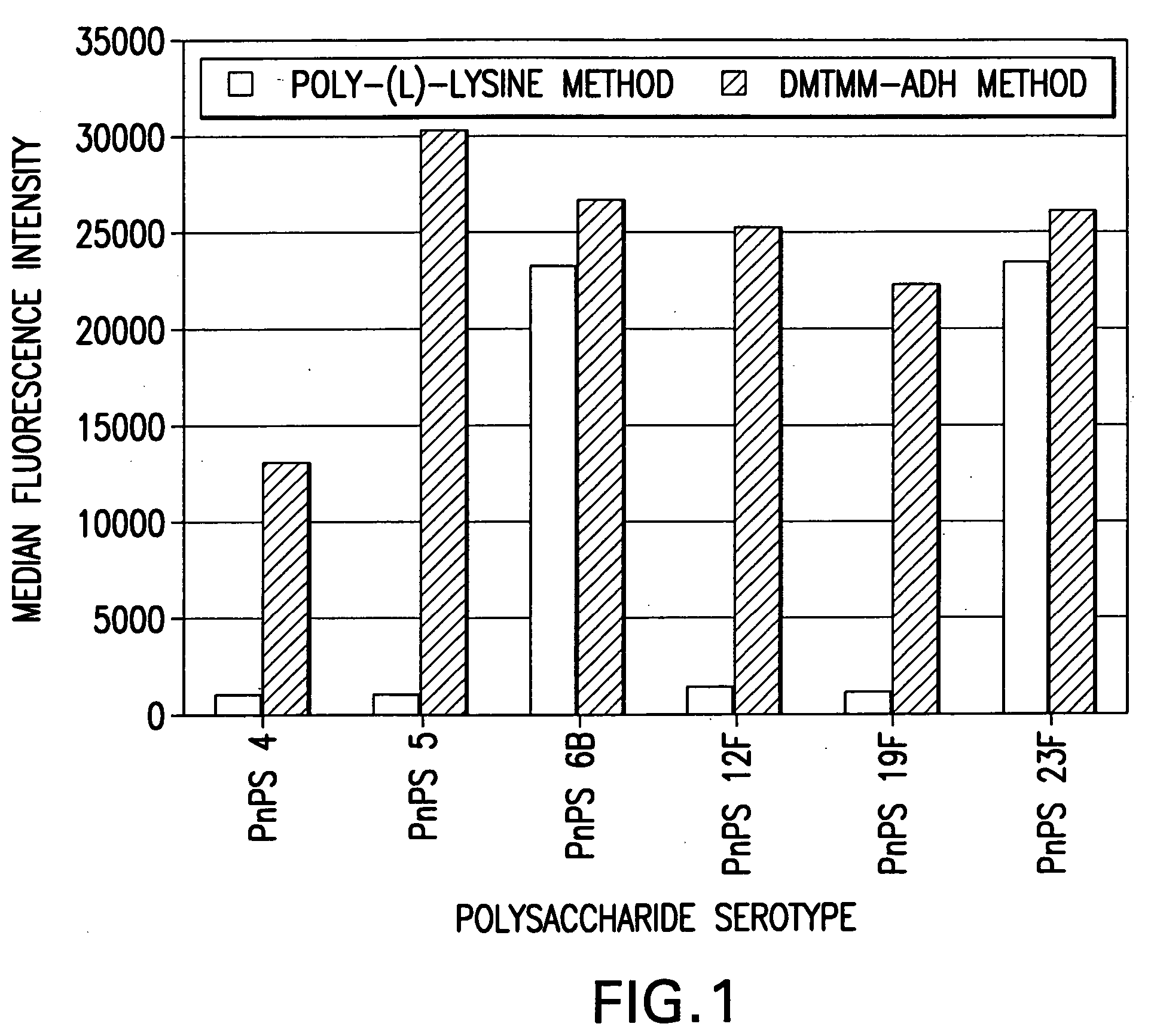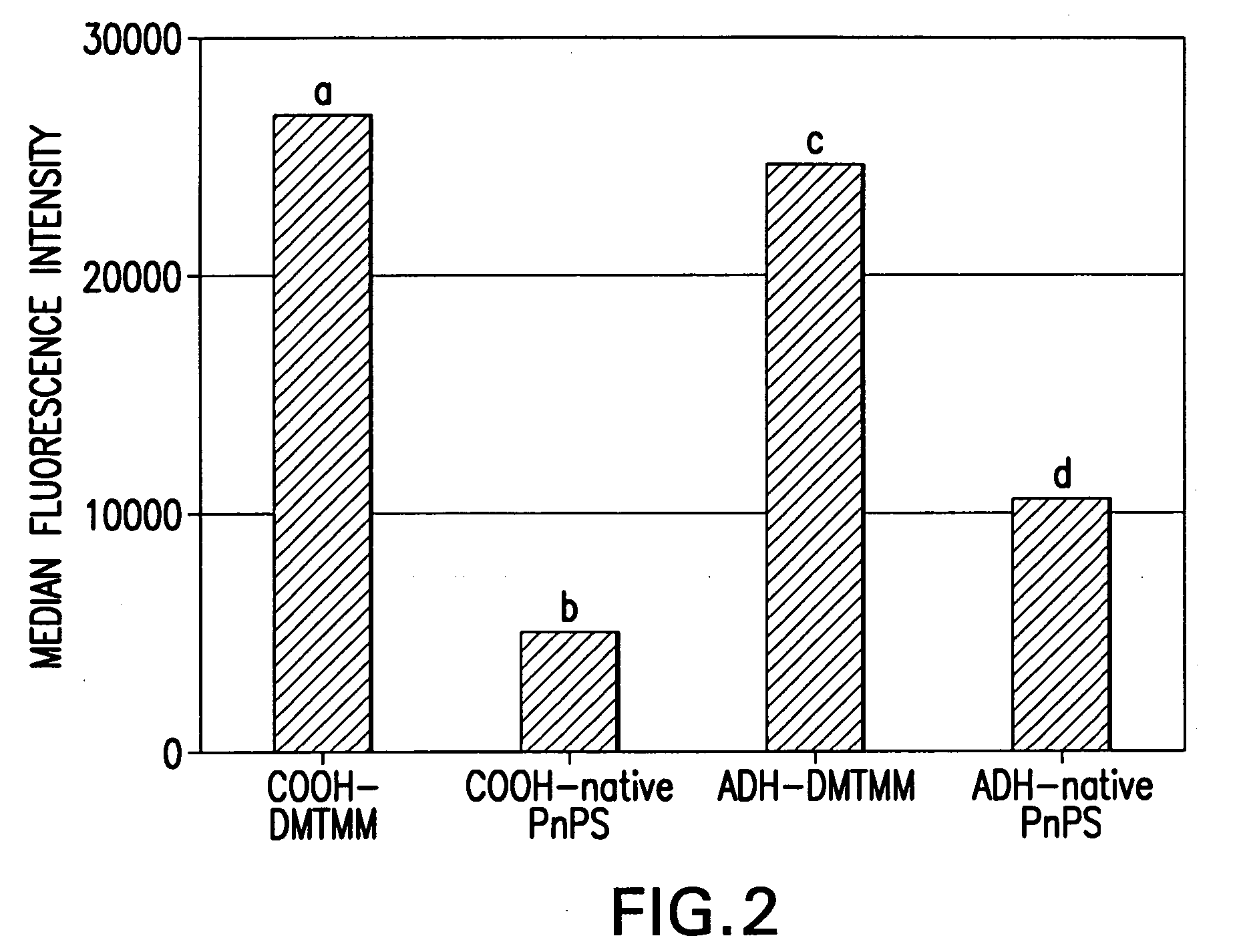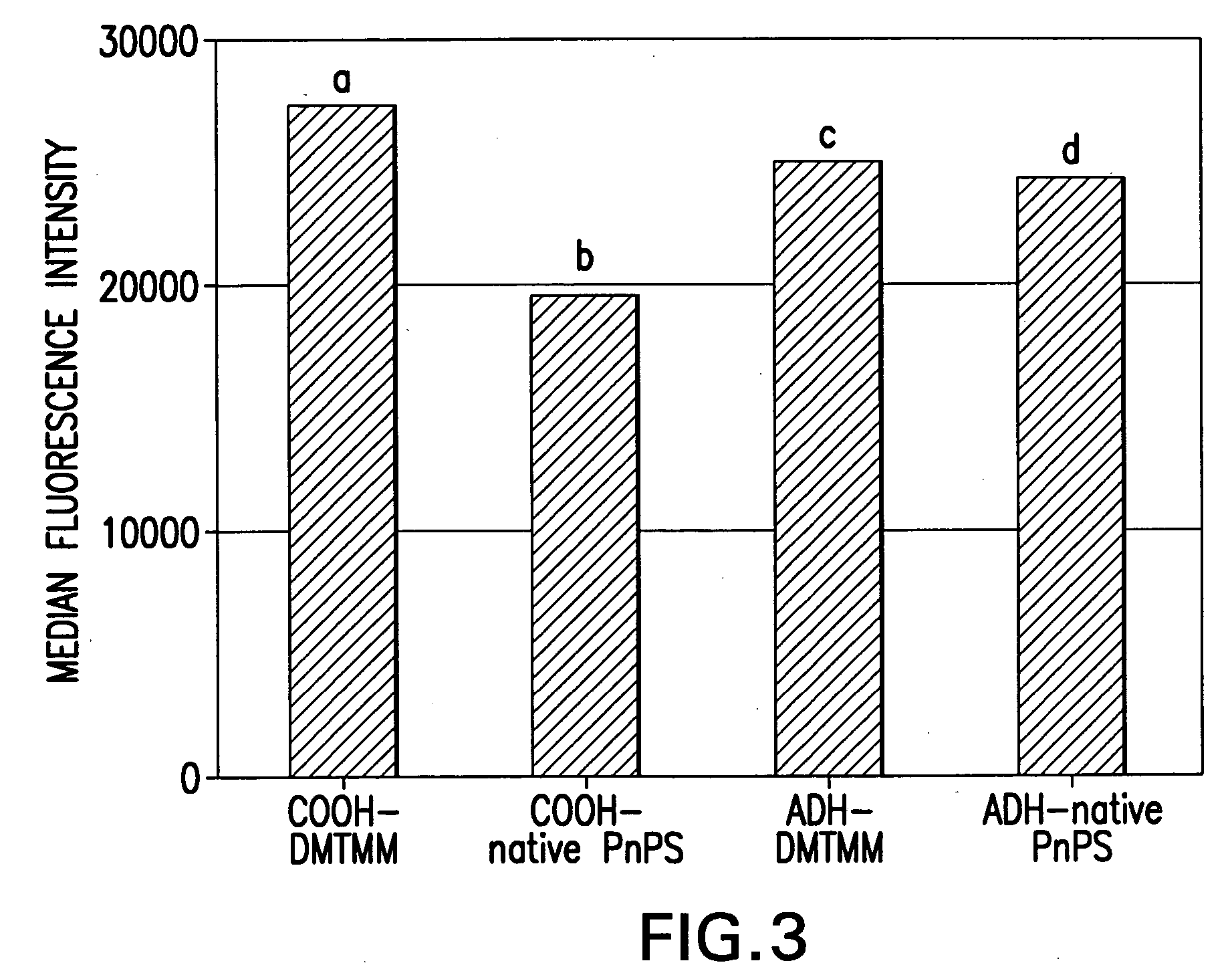Process for covalently conjugating polysaccharides to microspheres or biomolecules
a technology of polysaccharides and microspheres, applied in the field of covalent conjugation of polysaccharides to microspheres or biomolecules, can solve the problems of inability to accept variability, time-consuming and laborious, and non-covalent immobilization of pss onto solid surfaces (coating), and achieve the effect of altering anti-polysaccharide antibody levels
- Summary
- Abstract
- Description
- Claims
- Application Information
AI Technical Summary
Benefits of technology
Problems solved by technology
Method used
Image
Examples
Embodiment Construction
[0029] In one embodiment, this invention provides a method for coupling a polysaccharide to a microsphere or a biomolecule comprising activating said polysaccharide with 4-(4,6-dimethoxy[1,3,5]triazin-2-yl)-4-methyl-morpholinium chloride (DMTMM) and subsequently reacting the activated polysaccharide with said microsphere or biomolecule. In a class of this embodiment the coupling provides for a covalent attachment of a polysaccharide to a microsphere or a biomolecule.
[0030] In another embodiment, this invention provides a method for coupling a polysaccharide to a microsphere or a biomolecule comprising activating said microsphere or said biomolecule with 4-(4,6-dimethoxy[1,3,5]triazin-2-yl)-4-methyl-morpholinium chloride and subsequently reacting the activated microsphere or the activated biomolecule with said polysaccharide. In a class of this embodiment the coupling provides for a covalent attachment of a polysaccharide to a microsphere or a biomolecule.
[0031] In certain embodime...
PUM
| Property | Measurement | Unit |
|---|---|---|
| molecular weight | aaaaa | aaaaa |
| molecular weight | aaaaa | aaaaa |
| molecular weight | aaaaa | aaaaa |
Abstract
Description
Claims
Application Information
 Login to View More
Login to View More - R&D
- Intellectual Property
- Life Sciences
- Materials
- Tech Scout
- Unparalleled Data Quality
- Higher Quality Content
- 60% Fewer Hallucinations
Browse by: Latest US Patents, China's latest patents, Technical Efficacy Thesaurus, Application Domain, Technology Topic, Popular Technical Reports.
© 2025 PatSnap. All rights reserved.Legal|Privacy policy|Modern Slavery Act Transparency Statement|Sitemap|About US| Contact US: help@patsnap.com



